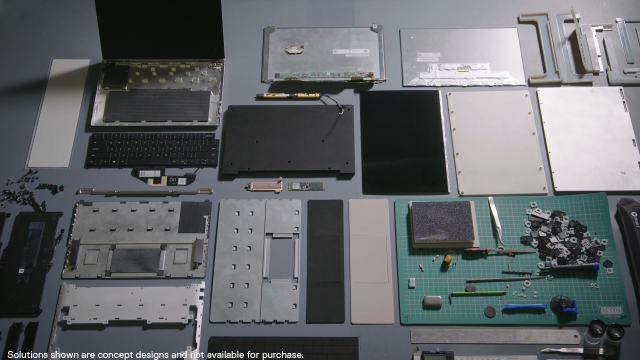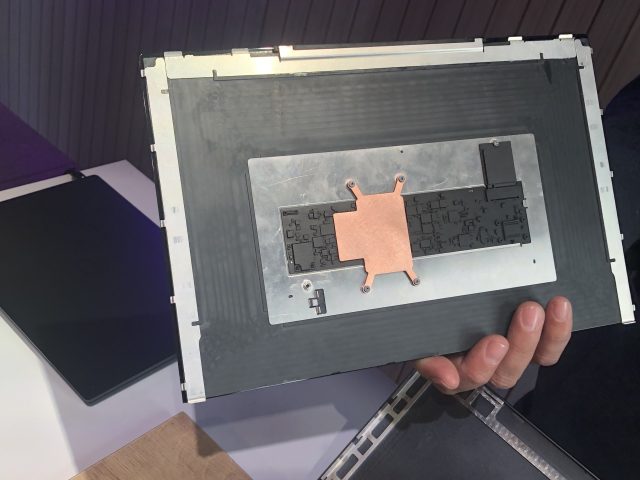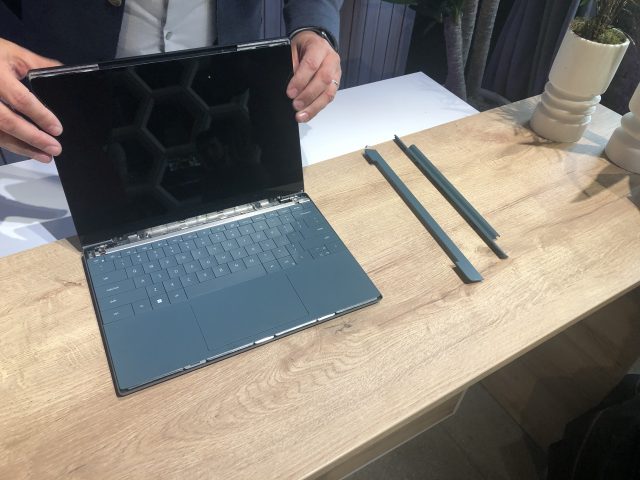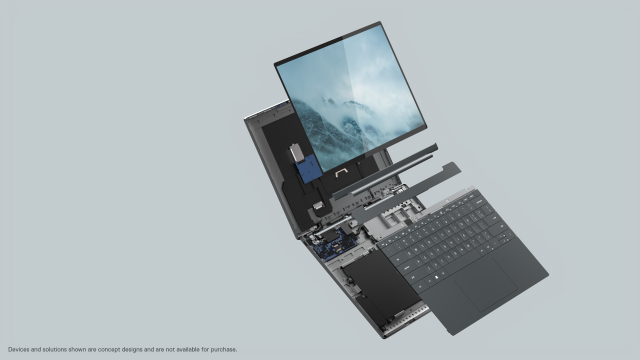What do you do when your laptop screen breaks or the keyboard gives out? After some troubleshooting, you probably toss out the machine and upgrade. But what if some of your laptop’s components could be harvested and put in another computer, like some Frankenstein creation? That’s what Dell has in mind with its Concept Luna laptop project.
Concept Luna
According to the UN’s Global E-waste Monitor 2020, only 17.4 percent of the 53.6 million metric tons of electronic waste created in 2019 was recycled. One of the sustainability goals Dell wants to achieve by 2030 is to reuse or recycle an equivalent product for every product a customer buys, with over 50 percent of product content being composed of recycled or renewable materials. And how will it get all those recyclable materials? Partially from Dell customers.
Last week, I was able to check out Concept Luna. Announced today, it’s a laptop aimed at helping Dell achieve its environmental goals by offering parts that are easier to repair, reuse, and recycle. The machine is built to open up easily, so you can harvest its motherboard or other parts to use in future systems. Through this process, Dell hopes that a motherboard will be able to be used in up to three machines.

Dell
One of the big twists here is that Concept Luna’s motherboard is behind its display. This is common in detachable laptops, but not in clamshells like Concept Luna. The location of the motherboard means the machine can’t be actively cooled, so Dell had to improve the system’s thermals.

“Relocating that smaller motherboard to the top cover puts it closer to a larger surface area exposed to the cooler air outside,” Glen Robson, CTO of the Client Solutions Group at Dell, explained in a blog post today. “This, combined with separating it from the battery charging unit in the base, leads to better passive heat distribution and could totally eliminate the need for the fan.”
A Dell spokesperson opened a Concept Luna laptop in front of me, and the process looked simple enough. By removing four screws, the Dell rep was able to take out two keystones before disassembling the PC and disconnecting a single cable to remove the motherboard.

Scharon Harding
The Dell spokesperson said that the motherboard would move to a lesser model. For example, a salvageable XPS motherboard could find a home in something like a Dell Latitude.
That part about disconnecting via a single cable is also important. The process for taking Concept Luna apart has to be easy enough that general users won’t be too intimidated to take advantage.

To that end, the laptop has 10 times fewer screws than 2019’s Dell Latitude 7300 Anniversary Edition laptop, which was marketed as Dell’s “most sustainable Latitude ever,” TechRepublic reported at the time.
Robson said it should all take about 1.5 hours less time to take apart, fix, and reuse its key parts.

Dell
Beyond the motherboard, Dell designed the laptop’s palm rest with repairs and reuse in mind. The keyboard comes out simply, but a Dell spokesperson noted that keyboards would likely see fewer life cycles because of how much they’re put through.
On the outside, the laptop uses an aluminum chassis made in a hydro-powered facility. The stamped aluminum “requires less energy and produces minimal scrap,” Robson noted.
Green goals
Dell built Concept Luna to be repairable with recyclable parts, but its original construction was made with sustainability in mind, too.

Scharon Harding
During the event, Dell pointed to its 7300 Anniversary Latitude as an example. The motherboard represents 75 percent of the eco-waste made to create that product. For the sustainable PC, Dell reduced the size of the motherboard by 75 percent compared to the Latitude 7300 Anniversary Edition, making it “smaller” than 5,580 square-millimeters, according to Robson, and also cut the component count by around 20 percent. Dell said that overall, this halves the carbon footprint of the motherboard.
Additionally, Dell used flax fiber for the base of the PCB instead of plastic laminates; it’s all held together with a water-soluble polymer.
Dell also claims that Concept Luna could lead to less power-hungry devices, allowing for smaller batteries with “advanced deep-cycle cell… still powerful enough for daily use,” Robson said.
Not all parts will be able to find a second life, however.